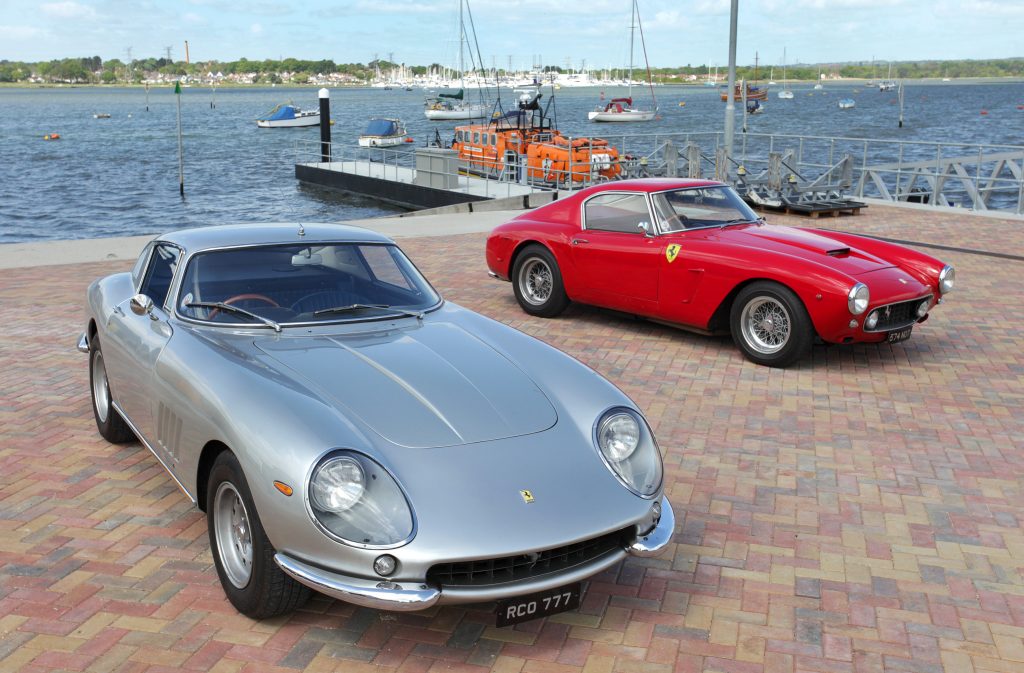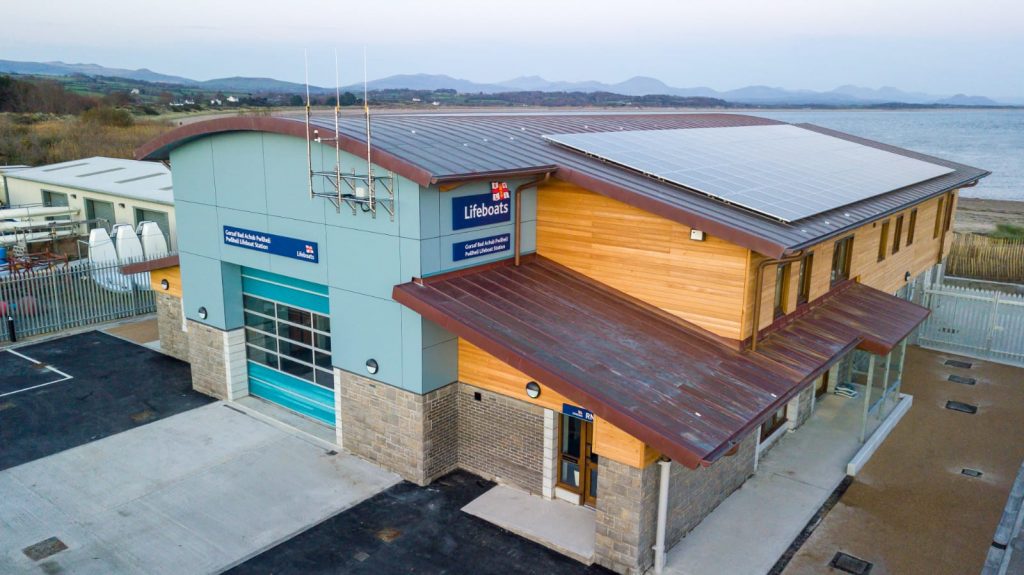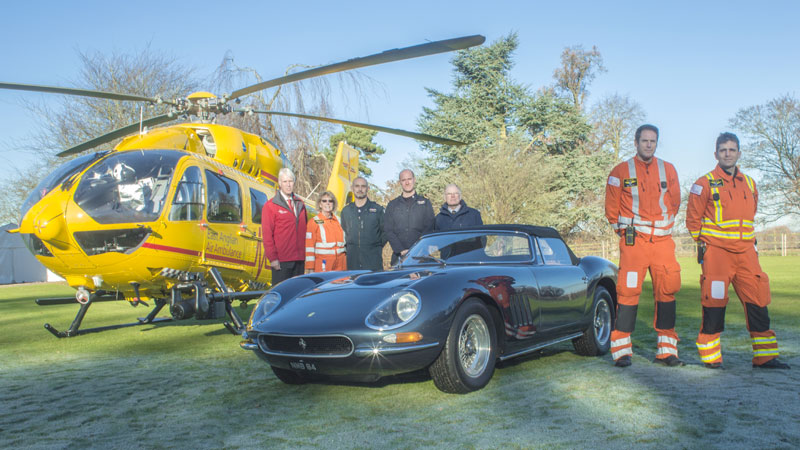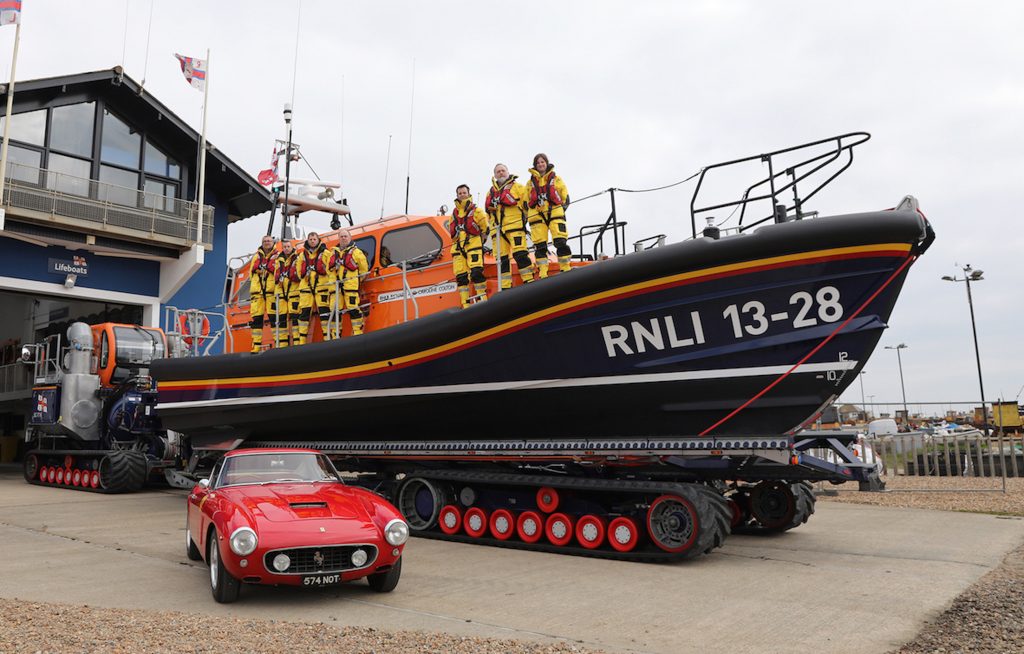It’s taken a while, but the Richard and Caroline Colton, a gleaming new Shannon lifeboat is on station at Hastings, along with its recovery tractor, the Richard and Mark Colton. There’s also a spanking-new lifeboat house awaiting commissioning at Pwllheli in Gwynedd, where the crew will soon be training on another £2.2 million Shannon and recovery tractor which are expected this April.
Whichever cloud they’re currently riding on, Richard and Caroline should feel proud that Richard’s legacy has created such a wonderful result. Two Ferraris, sold at auction for £8.5 million, with the proceeds helping to purchase two lifeboats and recovery systems, a boat house and a lot of running expenses for the Royal National Lifeboat Institution (RNLI), which estimates that it costs £385,000 a day to run its nationwide 24-hour rescue service and that six in every 10 lifeboat launches are funded by legacies such as the Colton’s; though few of them are of classic cars, or of such worth.
It was H&H Auctioneers which handled the 2015 sale, with chairman Simon Hope bringing down the hammer at £6.6 million on the 1960 Ferrari 250 GT short-wheelbase Berlinetta and £1.93m for the 1967 Ferrari 275 GTB/4 at the Duxford sale.

“Richard Colton was a huge character,” says Damian Jones, H&H’s resource manager and motor-car specialist. “He was a very keen motorist and collector.”
Jones says that Colton, a successful Northamptonshire businessman, formed a strong bond with Hope. “He was adamant that he wasn’t parting with the Ferraris until he died, but he said he didn’t have any immediate heirs and didn’t want to give it to the tax man. Funnily enough, he wasn’t a sailor…”
Indeed, some articles suggest Colton was afraid of the sea, but Jones reckons there is some evidence that his son, Mark was involved in a sailing accident some years previously, which might have motivated his father to reward the rescuers.
Clive Moore, Coxswain at Pwllheli and architect of the new boathouse that was constructed from the proceeds of Colton’s car sale, sums up what such donations mean to organisations like the RNLI. “We are a small Welsh station and the move to the new building and site will mark a significant period in the history of the station.

“I have a keen interest in classic cars and I find it remarkable and very humbling that a gentleman who had no seafaring connection should have the desire to support the RNLI through the sale of his treasured cars, and that we should now benefit at Pwllheli as a consequence of his generosity.”
The auction was a triumph, not just for the RNLI, it also established H&H, up to then a relative minnow in the classic-car sales world. And the cars had no reserve, which is always a severe test of an auctioneer’s skill and pluck.
“No-reserve sales are nerve-wracking,” admits Jones. “For the auctioneer it’s your chance to prove yourself on the international stage, or to cover yourself in ignominy.”
The prices were strong, though and in one case a record. “It was a lovely car to sell and probably won’t happen again,” says Jones, pointing out the uniqueness of the 250 GT. “To sell a car for £6.6 million where the owner has blown in the paint on the nose of the bonnet, with a rattle can to get rid of stone chips; I don’t think I’ll ever see anything like that again. “What was also lovely was the support we had,” he recalls, “everyone was waiving fees and doing it for cost.”
Success breeds success, as they say, and within a couple of years, H&H was selling the 1964 Ferrari 330 Nembo Spider for the executors of Richard Allen, a racing driver and motor enthusiast, who passed away in 2016. Allen had never forgotten the way the East Anglian Air Ambulance Service came to the rescue of a fellow race driver after a crash and bequeathed his car, which fetched over half a million.

From this you might be thinking that classic-car auctioneers are forever dealing with executors’ sales, but that’s far from the case, as Jamie Knight, chairman of Bonhams motoring group attests.
“I don’t think it happens a lot, but it does happen,” he says.
Knight has seen a few such charitable bequests, including a rare Bugatti, which was donated to the nation by the owner’s executors in lieu of an easement of death duties. As an advisor at the National Motor Museum, he sees quite a number of more modest bequests.
“Museums are always getting bequests,” he says, “and it’s amazing how many Allegros and the like are donated in wills to museums.”
He explains that while museums will almost always say ‘yes’, they might already have good examples of the bequeathed cars, so nowadays there’s a commonly-used clause, which allows the museum to sell such cars and use the funds in other areas.
Knight says there are some advantages in bequeathing a car from your estate, which is born out by Edward English of Tax Assist Accountants of Worthing.
“The value comes out of the calculation before IHT [inheritance tax],” he says, “so it’s out of the pot before HMRC [Her Majesty’s Revenue & Customs] get in there.”
He points out that a lot of charities benefit from bequests and if your car is worth a lot, it can have an even larger effect.
“If it’s above 10 per cent of the value of the estate, then IHT drops to a flat 36 per cent,” he says. Inheritance tax is normally rated at 40 per cent. “You can make some pretty huge charitable donations at not much cost to your estate.”
And if it’s really special and of national importance, your executors can even start a negotiation with HMRC, about reducing or waiving death duties, but that’s a really specialist job.
Even then, there are some basic ground rules well worth observing, whether you are considering handing over your car, or are an executor carrying out the wishes of the deceased.

Damen Bennion, founder of Bennion Law and specialist advisor in the legalities of collectors’ cars, boats and planes, points out a few ground rules.
“First, make sure there is evidence of ‘good title’,” he says, “and that’s not the V5 document, but a proof of purchase.
“Second, if you haven’t, you should make a will and you should make it very clear, with a description of the car and who it is gifted to, such as the charity.
“Third, make sure that the charity you are bequeathing the car to, is a charity and able to receive the car. You might think that some organisations are charities, but they might not be and also remember that some charities can be supremely ungrateful…”
Bennion, like everyone I spoke to in the course of preparing this article, stressed the value of taking specialist advice, especially if it is to do with tax planning, death duties and inheritance taxes.
As one London investment house pension specialist told me: “There are all sorts of benefits to bequests of this nature, but in my experience every single one starts with the benign intention of benefiting the charity…”
This March is Free Wills month, where people over 55 years of age can have a simple will drawn up or have their existing wills updated or revised by participating solicitors, with support from a host of different charities including the RNLI. Most charities rely on bequests to keep operating. So, if you were ever thinking of leaving the old motor to a charity, now might be the time to get on with changing your will. Just remember though, check whether they already have an Allegro.








